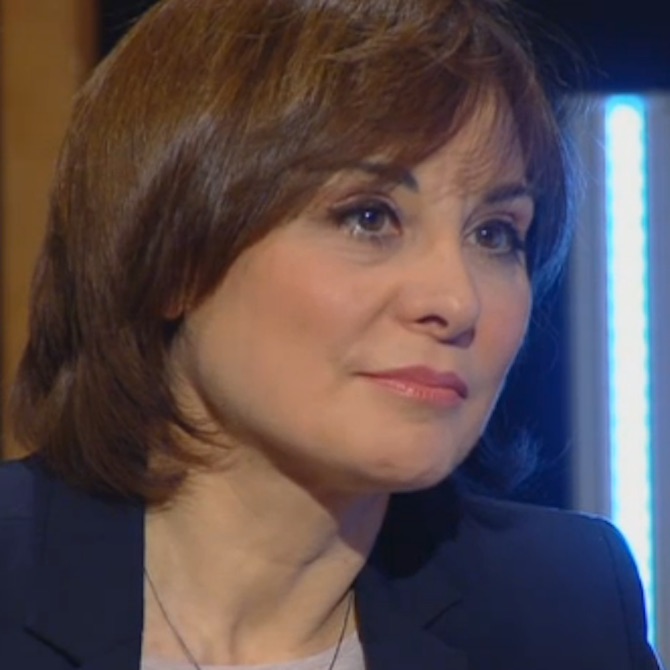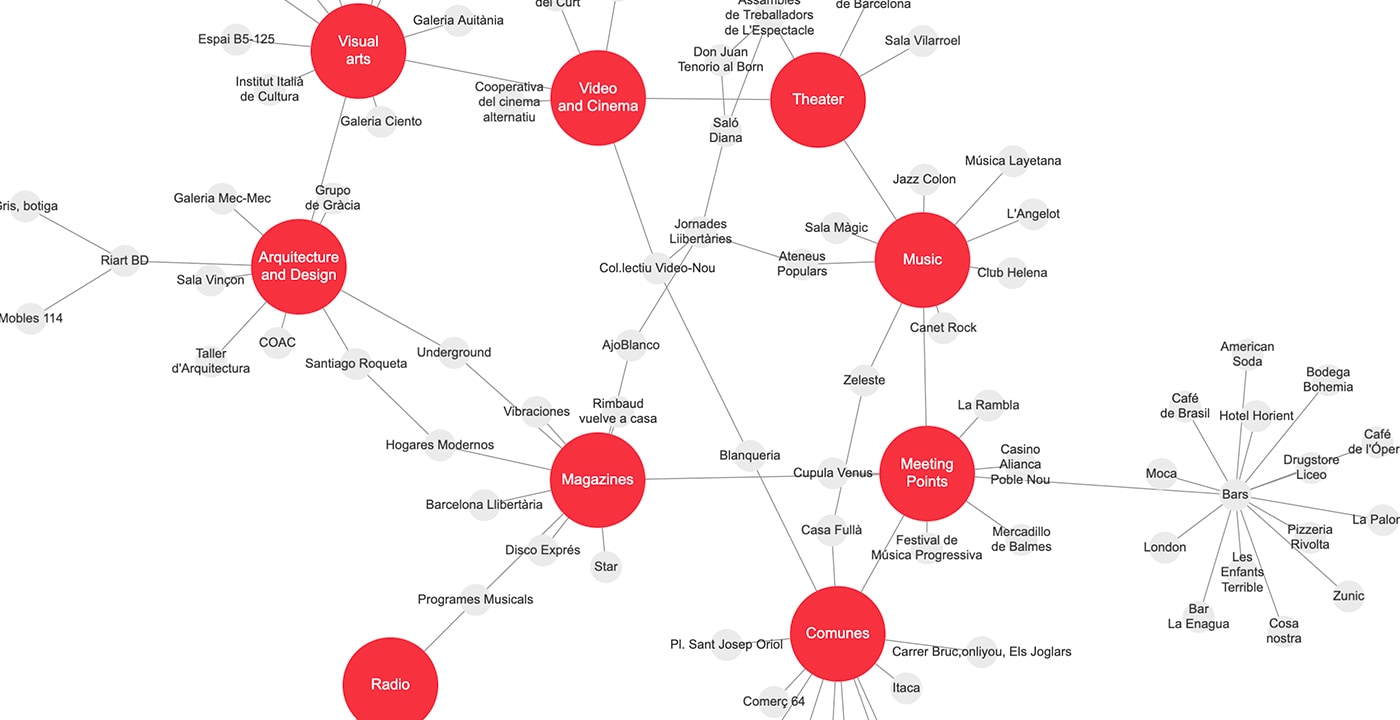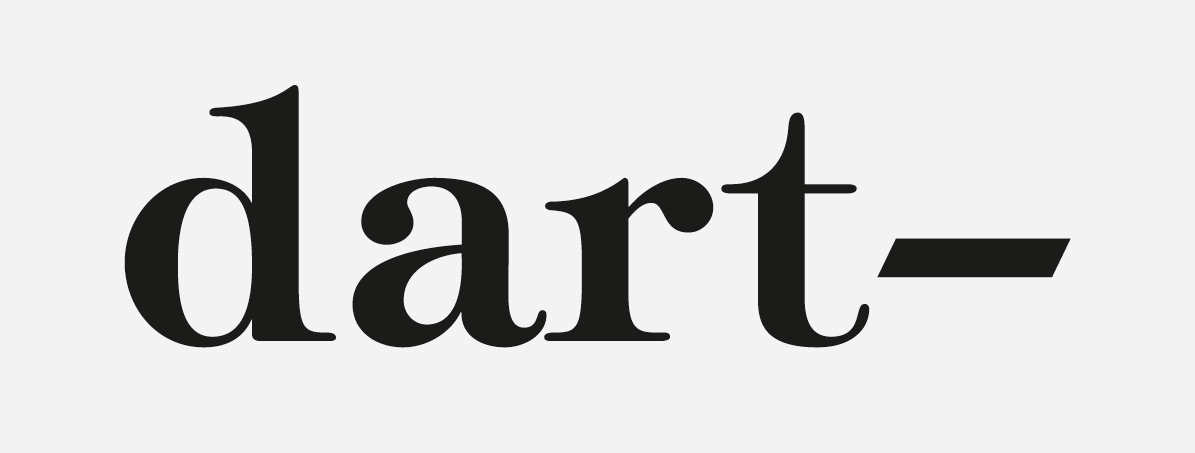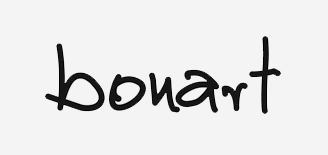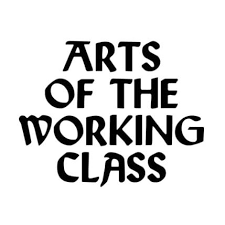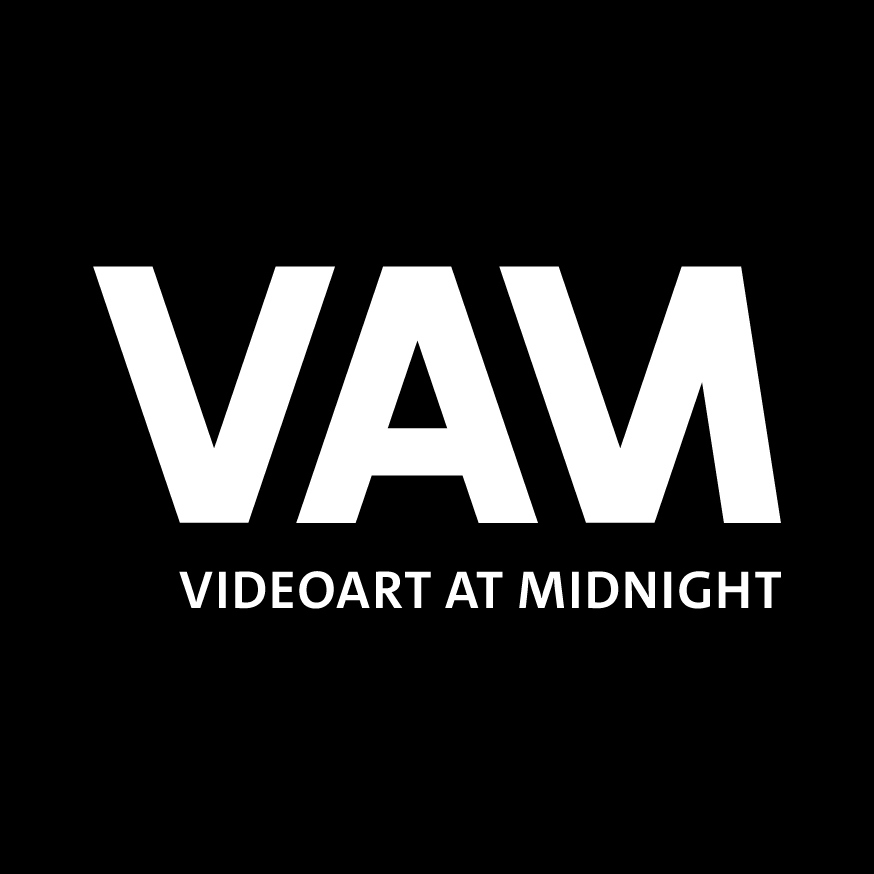X
GENEALOGIES OF ARTISTIC SELF-MANAGEMENT
Cartography of interdisciplinary places and complicities in the Barcelona of the 70’s
Zelest
Founded by Victor Jou, it is a place where musicians can meet to rehearse, new groups are created and can make recordings. They take out the record label Edigsa Zeleste, a music school and acontracting agency, all this leads to the revival of Catalanrock.
X
Bar La Enagua
Between 1969 and 1982, it was the bar where many musicians started playing before they went to Zeleste, like Rocky Muntañola, among others. The Bar la Enagua is a place for the contraculture mouvements and the live music. It was the place where many long nights started.
X
Casino Alianca Poble Nou
Founded in 1869, it was a representative entity of the movement of the popular athenaeums promoted by the Catalan civil society. During its years of activity it was a focus of creation and cultural diffusion, theatrical works and musical events. In the 70's, the Casino La Aliança del Poblenou played an active role in promoting artists of the Nova Cançó.
X
La Rambla
They were the agora of Barcelona's counterculture, the place to stay, make plans, talk about projects, claim, demonstrate (the strike of actors manifested itself there), expose themselves (the parades of Ocaña), have fun. It was the ritual in which everything converged.
The bars in the area (Bars - Zurich, Moka, American Soda, Pizzeria Rivolta, Café de la Ópera, Drugstore Liceo, London, Café de Brasil, Hotel Orient, Cosa Nostra, Bodega Bohemia, La Paloma, Jazz Colon, Les enfants terribles) were the obligatory meeting places.
X
Cupula Venus
It was a place where transgression, glamour and intellectuality were mixed. It offered a cabaret program with transformers, singers and actors who were very close to the public. It was promoted by the collective Roba Estesa and was inaugurated on November 24, 1978. Cabaret and live music went hand in hand. Among others, Lindsay Kemp, Christa Leem, the Colombaioni, Tortell Poltrona, Loles León, Gato Pérez and Oriol Tramvia performed.
X
Festival de Música Progressiva
The matinees of the Progressiva Music Festival in the Saló Iris (where boxing and wrestling evenings were held) were very popular among young people. Later, the Festival took place in Granollers (1971) and Sallent (1972) where six hours of progressive music were held.
X
Mercadillo de Balmes
The place where you could buy clothes, books, records... that defined another way of living.
X
Carrer Bruc,onliyou, Els Joglars
S'instal·len Onliyú i Els Joglars
X
La Floresta
It was a countercultural settlement, which had the railway station and bar as meeting points. Many cultural and creative activities were carried out in the casino and over time it gave rise to cooperative movements, nurseries, etc.
X
La Miranda, Pau Maragall
Located near Parc Güell, in the neighborhood of La Salut, La Miranda was a commune where people with leftist ideologies lived. One of them was the poet Pau Maragall.
X
El circo de las marionetas
Pepe Otal, who had a puppet theatre in Villa María, in the Vallcarca neighbourhood (1973-74), later settled in a building he occupied in Barcelona, where he settled with a group of friends and collaborators.
X
Blanqueria
Pepe Ribas, Xefo Guasch, fotògraf i estudiant de arquitectura funden La Ceca, al Born, on comparteixen espai amb alguns dels futurs membres del Col·lectiu Video-Nou, una cooperativa de vídeo independent i un dels col·lectius llibertaris més actius de Barcelona en aquells anys.
X
Ítaca
It was a commune that functioned in Tibidabo, between 1976 and 1982, where teachers, journalists, doctors, students, militants or former militants of leftist groups lived and who lived from a concept of non-nuclear family and shared upbringing.
X
Tricoco (Coordinadora de tribus comunas cooperativas)
It was a publication that materialized in three bulletins (the last published in 1976) aimed at supporting people affected by the Ley de Peligrosidad [Dangerousness Law].
X
Pl. Sant Josep Oriol
In the Montesol apartment, Nazario, Miquel Farriol and Javier Mariscal meet again and continue to publish in a state of creative effervescence, parties and underground.
X
Comerç 64
Nazario, Javier Mariscal, Miquel Farriol, regulars of the London bar found a commune on Comerç Street, with the name of El Rrollo as a collective. They edit the first issue of the magazine El Rrollo Enmascarado that lays the foundations of what they themselves defined as the Iberian underground. The clandestine presentation of the comic La Piraña Divina by Nazario at the Canet Rock festival causes the kidnapping of the comic by the police and the dismantling of the Comerç appartment. While some of the members go to Ibiza, Nazario returns to Huelva.
X
Casa Fullà
It is a building designed by Oscar Tusquets and Lluís Clotet, in an experimental way to encourage neighbors to socialize. It was built between 1966 and 1970. The façade stands out for the different volumes and decorative elements. The spaces were not too large but were characterized by their unevenness and different flights of stairs on the same floor. Promoted by the Briongos family, it was located in the Guinardó neighborhood (on Génova streetcorner Brussels). There lived Pau Maragall, Joan Brossa, Marta Pessarrodona, Anna Briongos, Victoria Combalía, Victor Jou (later founder of Zeleste) and Xavier Sust, among others. Music, parties and community dinners were common.
X
Tibidabo, Pau Riba i Mercè Pastor, 1969
One of the first known communes was Pau Riba and Mercè Pastor in Tibidabo in 1969. The police closed it in 1970 and the couple moved to Formentera.
X
AjoBlanco
It appears in October 1974 (promoted by Pepe Ribas, Toni Puig, Ana Castellar, Quim Monzó, Luis Racionero, Albert Abril, Claudi Montañá, designs by Cesc Serrat). The first issue is presented on 23-4-1976 in La Rambla. The office on Aribau Street was a meeting point. The magazine experiences three distinct stages: from October 1974 to June 1975 it is a pop and underground stage; from September 1975 to November 1976, is what Pepe Ribas defines as freaks stage. Working groups emerge on specific topics, such as anti-psychiatry, ecology, super 8 cinema, naturists, free sexuality, etc.. Between 1976 and 1978, the working groups were transformed into collectives and linked to the libertarian movements. In July 1977 the Jornades Llibertàries [Libertarian Days] took place in Parc Güell, the Saló Diana and the Popular Athenaeums. September 1978 and May 1980 is a stage of social movements (trade unions, free radios, insubmissive, gay liberation, workers' autonomy...).
X
Rimbaud vuelve a casa
With the subtitle "La revolución proletaria y el renegado Kautsky" (The proletarian revolution and the renegade Kautsky) was a magazine edited by Bruno Montaner and Roberto Bolaño in 1977. The same year Bolaño published Montón de estrellas fracasadas, a compilation of his poetic work (1975-1977).
X
Star
It was a magazine countercultural press and underground published in Barcelona for "Producciones Editoriales" between 1974 and 1980, the youngest son of the publisher family, Juanjo Fernández, was the director. It was a magazine that was transformed quickly, first giving space to cartoonists, photographers and illustrators such as Ceesepe, Nazario, El Hortelano, Montxo Algora, Ouka Lele, García-Alix, Peret, Pérez Sánchez and, opening up to other cultural forms, such as punk-rock. Pau Maragall with the pseudonyme Pau Malvido wrote some articles of the countercultural thinking, "We, the damned".
X
Disco Exprés
It was a nationally distributed music weekly, published in Pamplona between 1968 and 1979, and later in Barcelona until 1984. It reported and gave opinions mainly about pop and rock music.
X
Underground
Eina School Magazine.
X
Vibraciones
Directed by Angel Casas, 1974, focused on music, it stood out, among others, for the articles by Claudi Montañá on underground movements. It was a point of reference for lovers of all kinds of musical styles, since it was possible to find in the same issue articles about Lou Reed, Lluis Llach, Tangerine Dream, Raimon, Nico, David Allen, Deep Purple, Sisa, Santana, Pau Riba, Rolling Stones, Bob Marley, Bruce Springsteen, King Crimson, Maria del Mar Bonet, Robert Wyatt, David Bowie or Elton John, among others. Articles and reviews of records of the "laietana" music that was just beginning in those years and also about the musicians and groups that were pioneers before: the "progressive music" were published.
The editorials by Àngel Casas stand out, in which he talks about current events, the situation of the country, the post-Franco censorship, the problems of local musicians to survive, the prohibitions and fines imposed by the authorities.
X
Barcelona Llibertària
During the celebration of the Jornades Llibertàries (Libertarian Days), the magazine Ajoblanco published the free newspaper Barcelona Llibertària.
X
Hogares Modernos
The interior design and design magazine Hogares Modernos had the writer Manuel Vázquez Montalbán as editor-in-chief and between 1969 and 1972 he wrote a series of articles "Las aventuras the Jack el Decorador" [The Adventures of Jack the Decorator], in which under the pseudonym he ironically parodied the petty-bourgeois "new consumerism" of the time.
X
Música Layetana
It was a musical style baptized by Gato Pérez to name the groups that emerged around Zeleste, characterized by stylistic and musical diversity.
X
Sala Màgic
It was the first multidisciplinary space in which you could see a musical performance and dance as much as watching an exhibition or an experimental film and eating a sandwich. It was a center of the countercultural world, of anarchism and hard music, a space run by the underground collective. The authorities closed it several times. The place was a labyrinth of spaces that went up and down, located next to the Mercat del Born. It was inaugurated by Esqueixada Sniff. Almodóvar showed his first shorts there with an amateur projector. Without a microphone, he narrated the dialogues and sang couplets of the Piquer. Some comic cartoonists made an exhibition with the works hanging on the wall (like Nazario and others). The group Macromassa (Juan Crek and Victor Nubla) did a concert in 1976. The last of the concerts was recorded with a Revox tape recorder and is considered the first self-edit album.
X
Canet Rock
It took place on July 26, 1975 and was the busiest and most transgressive outdoor rock festival of the time. Permissions to do so were not obtained until the last moment. There were stalls selling comics and magazines(El Rrollo Enmascarado, Ajoblanco, Star, Vibraciones)and also necklaces and yoga books.
X
Club Helena
Located in The Street Ros de Olano, 6 corner with Major de Gràcia). The Cuc Sonat collective organizes concerts, 1976
X
Zeleste
Founded by Victor Jou, it is a place where musicians can meet to rehearse, new groups are created and can make recordings. They take out the record label Edigsa Zeleste, a music school and acontracting agency, all this leads to the revival of Catalanrock.
X
L'Angelot
This small room located behind the main post office was a meeting place for political dissidents and cabaret, at the end of the 70s, a place of presentation of music groups such as Correo Viejo, with Carlos Segarra, Joe Luciano, Pedro Martínez, "Bolas", Pete Ernest. Many years later, in 1993 it will become an association of contemporary culture, specializing in art and new technologies.
X
Butifarra!
Self-managed satirical magazine focused on the workers' and neighbors' struggle and against speculation. It was promoted in 1975 by Alfonso López.
X
Rock Comix
It was an example of a comic/musical self-managed by Gaspar Fraga, with the collaboration of Juan Ramón Guzmán. The first issue was entitled Frank Zappa (1976) and consisted of songs illustrated by Roberto Durán and Max. Later issues were Lou Reed & The Velvet, with illustrations by Nazario that were used without permission by Lou Reed himself; Pink Floyd, with drawings by Montesol, Mariscal, Evelio Gómez, Max, Guzmán and Juan Soteras.
X
Zap 275
It was the store that distributed all these comics. Known as the temple of underground comics, it was located at 17 Espartería street. Directed by Jaume Fargas, it became a place to sell comics and a meeting place for lovers and artists of the genre.
X
La Cloaca
Poetry magazine and publishing house founded by Xavier Sabater in 1976. It had as collaborators Pere Marcilla, Grupo Taller de Marionetas, Vicente Gil and Alfredo Balsach, among others. In 1978 the publishing house was legalized.
X
El Rrollo Enmascarado
One of the first underground comics. It was based in an apartment in Comerç 64, shared by Nazario, Javier Mariscal, Miquel Farriol and others). El Rrollo Enmascarado was characterized by an irreverent and provocative costumbrism towards the lack of sexual freedom and double standards. El Rrollo Enmascarado was kidnapped for public scandal. The authors of these comics were Miquel Farriol, Bordill, Pàmies, Pepicheck, Francesc Capdevila (Max), Mariscal and Roger.
X
Paupérimus
Comic that appeared in the offprint of the magazine Nueva Dimensión directed by Luis Vigil.
X
Catalina
Còmic que també va ser segrestat, suspès i multat.
X
La Piraña Divina
Its author, Nazario, sold it clandestinely in Canet Rock. The kidnapping of this comic by the police was the trigger for its creators to settle in Eivissa in the Can Americano farmhouse that Mariscal had rented and leave the flat-comunne in Comerç street.
X
Sala Vilarroel
Promoted by Angel Alonso Tomás, promoter and professional in the theatrical and audiovisual field and film scriptwriter and television producer, directed the Villarroel between 1972 and 2010. They programmed playwrights exiled or censored by the Franco regime. They performed La Cuadra de Sevilla, Los Goliardos, left-wing political plays, held assemblies, anti-psychiatry conferences, which counted with the presence of Guattari and Basaglia (between July 17 and 23, 1978), in the bar there were meetings with feminist associations or anonymous alcoholics, among others. In the stadium there was the Épsilon bookstore, which was a reference of the underground.
X
Assambles de Treballadors de L'Espectacle
In the early 1970s, the Institut del Teatre, directed by Hermann Bonnin, underwent a process of Catalanization and expansion of the departments of contemporary dance, mime and pantomime, puppetry and marionettes, and opened up to audiovisual language and theatrical sciences. Strike of actors and theater directors from all over the state and demonstration in La Rambla, January 1976. Actors took to the streets to demand a municipal theater policy and fairer working conditions, with unemployment benefits, for example.
The Assemblea d'Actors i Directors is born and organizes the Grec'76 festival, with the slogan "for a theater at the service of the people", it was the first example of theatrical self-management.
A split occurs from the Assemblea d'Actors i Directors and the Assemblea de Treballadors de l'Espectacle (ADTE) is born, which will be the one to organize a Don Juan Tenorio in the Born, in November of the same year 1976. After negotiating with the City Council and the neighborhood associations of the Ribera district, the ADTE took over the Mercat del Born, then in disuse, and performed Don Juan Tenorio with each scene directed by a different director and with the main roles played by different actors and actresses, on some occasions even changing the genre. Pau Riba, Oriol Tramvia, Carme Elias, Sílvia Munt, Mario Gas, Vicky Peña, Ricard Borrás, Ocaña were some of the many performers and participants of the event.
This event consolidated the Ribera neighborhood as a key place for underground culture.
X
Grec'76
In 1975 takes place a strike of actors and theater directors from all over the state and in January 1976, a demonstration in La Rambla. Actors took to the streets to demand a municipal theater policy and fairer working conditions, with unemployment benefits, for example.
The Assemblea d'Actors i Directors is born and organizes the Grec'76 festival, with the slogan "for a theater at the service of the people". This was the first example of theatrical self-management.
X
Don Juan Tenorio al Born
A split occurs from the Assemblea d'Actors i Directors and the Assemblea de Treballadors de l'Espectacle (ADTE) is born, which will be the one to organize a Don Juan Tenorio in the Born, in November of the same year 1976. After negotiating with the City Council and the neighborhood associations of the Ribera district, the ADTE took over the Mercat del Born, then in disuse, and performed Don Juan Tenorio with each scene directed by a different director and with the main roles played by different actors and actresses, on some occasions even changing the genre. Pau Riba, Oriol Tramvia, Carme Elias, Sílvia Munt, Mario Gas, Vicky Peña, Ricard Borrás, Ocaña were some of the many performers and participants of the event.
This event consolidated the Ribera neighborhood as a key place for underground culture.
X
Saló Diana
Located on San Pau street in a building that had been a cinema, the Diana was an experience as brief as it was intense (1977-78), promoted by Mario Gas, Carlos Lucena and Albert Dueso. In a way, its history is the history of the city of Barcelona, of what could have been and was not. Singular because it brought together a very diverse group of young people who were studying at the Institut del Teatre, actors and actresses with a more consolidated classical professional career, people linked to the CNT, activists and other freaks. In July 1977 the debates of the Jornades Libertàries (which also took place in the Parc Güell and the popular athenaeums) were held. Its richness lay in its diversity: of its members and its program with a great variety of contents that included from the Living Theatre to Shakespeare through the Libertarian Days, Rock & Roll concerts, performances of the Yaqui Indians, dance Thursdays or screenings of films such as The Phantom of Paradise or The Three Musketeers), the wide range of schedules (in morning, afternoon, evening and early morning sessions) and the diversity of audiences.
X
Jornades Liibertàries
Organized by the CNT and the magazine Ajoblanco were held between July 22 and 27, 1977. In the Saló Diana debates and meetings were held, as well as in some Ateneus Populars and Parc Güell, where the most playful and festive actions took place. The magazine Ajoblanco published the free newspaper Barcelona Llibertària. The Col·lectiu Video-Nou recorded and filmed all the events.
X
Teatre Metropolità de Barcelona
Located in a subway station under construction, the first play with a homosexual theme was presented. It was an initiative of theater director Iago Pericot, actor Sergi Mateu and musician Santi Arisa.
X
Taller d'Arquitectura
The studio was founded by Ricardo Bofill in 1963 and had a multidisciplinary team of engineers, urban planners, graphic designers, sociologists, writers, film directors and philosophers. The initial team included Anna Bofill, Salvador Clotas, Ramón Collado, José Agustín Goytisolo, Joan Malagarriga, Manuel Núñez Yanowsky, Dolors Rocamora and Serena Vergano.
X
COAC
In this historic institution paradigmatic exhibitions were presented, sometimes in collaboration with the Foreign Institutes of Culture in the city (German Institute, French Institute, Italian Institute) that presented the series of exhibitions Nuevos comportamientos artísticos [New artistic behaviors], coordinated by Simon Marchan (1973) or Leer la imagen [Reading the image]). It also hosted the presentation, debates and exhibitions on Video-Art (1978, in collaboration with the Institut del Teatre de Barcelona).
X
Santiago Roqueta
He was a key figure, promoter of studio stores such as Snark Bazaar and the design publishing house Snark Disseny with Ricard Aleu and Gabriel Mora. Snark Disseny was a reference design editor with recovered works by Rietveld, Giacomo Balla, Hoffmann, Salvador Dalí and others. Architect, designer, interior designer, editor and draftsman, he was a multifaceted character who also exhibited at the Sala Vinçon and organized exhibitions at the COAC. Precisely, in the COAC archives is preserved the history of paradigmatic exhibitions, the legacies of designers and architects who made a conceptual and transdisciplinary work (as Roqueta himself) and also the collaborations with the Institutes of Foreign Culture in the city (German, French, Italian Institute).
X
Riart BD
Carles Riart also stands out, with more conceptual design works, such as the project Serie de muebles componibles para ser montados rápidamente por ti mismo (1974) and author of RiartBD and later of the shop/meeting point Muebles 114 and Gris, together with the filmmaker Bigas Luna.
X
Mobles 114
Carles Riart also stands out, with more conceptual design works, such as the project Serie de muebles componibles para ser montados rápidamente por ti mismo (1974) and author of RiartBD and later of the shop/meeting point Muebles 114 and Gris, together with the filmmaker Bigas Luna.
X
Gris, botiga
Carles Riart also stands out, with more conceptual design works, such as the project Serie de muebles componibles para ser montados rápidamente por ti mismo (1974) and author of RiartBD and later of the shop/meeting point Muebles 114 and Gris, together with the filmmaker Bigas Luna.
X
Grupo de Gràcia
Graphic designers such as Salvador Saura, together with Carles Camps, Xavier Franquesa, Jordi Pablo and Santiago Pau collaborate in what we can call Grup de
Gràcia.
X
Sala Vinçon
1973-1983 - Vinçon was a design store run by the Amat family since 1957 and renovated by Fernando Amat in 1967. La Sala Vinçon opened in 1973, in the space that had been the studio of the painter Ramon Casas, and for 10 years developed a heterogeneous program where the most representative artists of the Catalan conceptual scene, relevant names in design, etc. exhibited.
X
Galeria Mec-Mec
Directed by María José Wynn, it was the first underground gallery in the Ribera neighborhood. It was located at 37 Assaonadors street. The exhibitions were accompanied by events and parties. "Gran Hotel" was Mariscal's first solo exhibition. Ocaña was another of the artists who exhibited.
X
Institut Italià de Cultura
X
Espai B5-125
It was a space of the Autonomous University of Barcelona, in Bellaterra. It operated between 1978 and 2018. Driven by Teresa Camps, professor at the UAB and volunteer artists and students. It was born with the desire to put art and artists in contact with students of Art History at the UAB. It occupied an empty room at the University, B5-125 until 1981. During its career, it occupied corridors, halls, and locations outside the campus. With no fixed budget, it was characterized by its flexibility in adapting and occupying spaces. It generated a great complicity between artists and students, with the follow up of Teresa Camps. A total of 92 exhibitions were held and in the 70's conceptual practices had a strong presence.
X
Galeria G
Located at 264 Casanova Street, Galeria G functioned as a commercial gallery, but offered another type of work: multiples, objects, images, actions and installations. Directed by Manel Valls, it brought together a group of artists who soon became known as "Col·lectiu G", with Benet Ferrer, Eulàlia Grau, Jordi Benito, Jordi Pablo, Carles Pujol, Vicenç Viaplana and Ferran García Sevilla, among others. Later, solo exhibitions of the artists themselves followed. The gallery published documents, serigraphs, objects, multiple of these projects. It also promoted international contacts through the intervention in the Museum of Malpartida, of the artist W. Vostell and the participation of artists of his group in the X Biennial of Paris. The gallery remained open from 1975 to 1978.
X
Cadaqués Canal Local
. The works by Muntadas: Cadaqués, Canal Local (July 26th-29th, 1974) and Distrito Uno (1976) are clear precedents of the first communitary TV's.
X
Galeria Ciento
Directed by Marisa Díez de la Fuente, at Consell de Cent street, it included in its program young artists and documentation formats of the work of artists such as Eugènia Balcells or Muntadas and videos of Jordi Benito's performances, for example.
X
Galeria Aquitània
It opened in 1970. Directed by Angélica Casellas, she decided to found it after an inspiring trip to London. Located in the lobby of the Aquitania cinema, it allowed contact with a non-specialized public. It carried out a program of artistic interventions in which participated, among others, Silvia Gubern and Angel Jové and, later, conceptual artists such as Muntadas and Carlos Pazos. From its unusual situation, it managed to activate dynamic and unconventional proposals and make a place for itself by creating an audience.
X
Espai 10
Following Joan Miró's wish to turn the Foundation that bore his name into a Center for Studies and Information on Contemporary Art, in 1975, a specific space was dedicated to the promotion of young and experimental artists under the name of Ámbito de Investigación. As an autonomous organism linked to the Foundation, its functioning was divided into specific and interdisciplinary commissions that worked on its program. Exhibitions such as "The Object, Art and the Environment" and "Sociological Art", among others, were held.
X
Associació del Personal de la Caixa de Pensions
In Amadeu Vives street, it was a space "occupied" to show works by Jordi Benito (1972), Carles Pazos (1973), Jordi Pablo or Fina Miralles.
X
Video i Cinema
The video camera, which Muntadas brought back from New York, was a fundamental tool for recording and defining a new way of making and understanding artistic and social practice. It was also a time of free radios (Ona Lliure was one of them, in 1978) and the first experiences of community television. The pieces by Muntadas: Cadaqués, Canal Local (July 26-29, 1974) and Distrito Uno (1976) are clear antecedents. Likewise, artists such as Eugeni Bonet and most of the conceptual artists (Rabascall, Miralda, Benet Rossell, etc.) experimented and worked with the film format either individually or collectively. The members of the Taller de Arquitectura also carried out film projects of a markedly experimental nature.
X
Col.lectiu Video-Nou
Proposes its practice as a contribution using technological means of communication, for the decentralization of power and the strengthening of grassroots culture. Some of his works were: "Jornades Llibertàries Internacionals" (1977), "Projecte inicial d'estudi de les formes de vida i cultura popular als barris de Barcelona" (1977), "Campanya d'intervenció vídeo al barri de Can Serra, a l'Hospitalet" (1978), "Programa d'intervenció vídeo en la campanya pro ateneus populars i llibertaris" (1978), "Projecte per al Servei de Vídeo Comunitari" (1979), among others.
X
laSal
Library Bar that was located in Riereta Street, 8. It was the local bookstore for women, it is therefore the first feminist publishing project, La Sal Edicions de les Dones.
X
Central del Curt
Initiative of Martí Rom and Joan Martí Valls -responsible for the Informe 35 film club, at the Sala dels Escolapis in Balmes/Travessera de Gràcia. It took place between 1974 and 1982. They organized the film material of Pere Portabella and Nunes, from an apartment in Rambla del Prat. Later, they produce films through the Cooperativa de Cine Alternativo with Llorenç Soler.
X
Cooperativa del cinema alternatiu
X
Although all the histories of the countercultural movements are being recovered (the most recent, the exhibition ” Underground y contracultura en la Cataluña de los 70″ [Underground and counterculture in Catalonia in the 70s], at the Palau Robert, curated precisely by one of its architects, Pepe Ribas (founder and director of the magazine Ajoblanco), there are still numerous self-management initiatives pending recovery, to be put in value through their archives, to incorporate the living memory of those who were part of it and use it collectively.
In this case, we present a cartography of places where there was a great interdisciplinary exchange and complicities, of great creative freedom, which constitute the basis of the public sphere of the city (a few years in which everything was to be done and everything was possible) and that due to personal attrition and the processes of institutionalization that took place in the early 80s, had an existence as intense as it was limited in time.
We are talking about initiatives that took place before the dynamics of institutionalization, therefore, in many cases, they have to do with life events that would constantly intertwine with creative events, with a great freedom of self-management, flexibility and also improvisation.
The 70s are a time of change in the city of Barcelona. Already at the end of the 60s, there was a whole generation that proposed different ways of living. Following the countercultural currents of the 60’s in the USA and other European countries, they shared music, readings and trips that opened a whole imaginary of vital alternatives. Values such as collectivity, feminism or ecology begin to mark different ways of thinking and living. Already in 1969 we find a paradigmatic case of an alternative housing model, the Fullà house, in Guinardó, where architects experiment with spaces and ways of inhabiting them. The idea of living in community or communes will be replicated in the city, in Tibidabo, in La Floresta, in Comerç street or in the Gothic quarter. This coexistence is linked to collective creativity. Apartments and houses in which living, working and having fun were closely interconnected. The practices of visual arts, comics, music, poetry, design, architecture, photography, theater and publishing often converged and intertwined.
Once the dictator is dead, everything remains to be done. Everything is possible. The Grec’76 Festival was a timid beginning of self-management followed by the commitment to work from the collective. A paradigmatic case that perfectly summarizes these processes is that of Saló Diana.
In a way, its history is the history of the city of Barcelona, of what could have been and was not. It was unique because it brought together a very diverse group of people: young people studying at the Institut del Teatre, actors and actresses with a more consolidated classical professional career, people linked to the CNT, activists and other “freakies”. The richness of the program was its diversity: of its members and of its program, with a great variety of contents (which included from Living Theatre to Shakespeare, passing through the Jornades Llibertàries [Libertarian Days], Rock & Roll concerts, performances of the Yaqui Indians, dance Thursdays or screenings of films such as The Phantom of Paradise” or The Three Musketeers), the wide range of schedules (in morning, afternoon, night and early morning sessions) and the diversity of audiences.
The end of these initiatives coincides with the emergence of the punk wave coming from England as a reaction to the first signs of neoliberalism taking root and which has to do with a greater individualism and will to provoke. The death of the dictator, the process towards the transition, the Moncloa pacts and, very graphically, the Scala case (in which CNT militants were falsely accused of putting bombs in the Scala) show the step towards institutionalization, a more homogeneous and regularized city model in which very little space is left for the most unpredictable initiatives, such as the underground and the counterculture.
The form of a mental map used in this study has allowed us to establish groupings and also more dynamic relationship arrows between the different experiences. Thus, we situate the beginnings in the collective forms of living, the communes, among which we find that of Pau Riba and Mercè Pastor at Tibidabo, in 1969; the Fullà house, in 1970 in Guinardó; Comerç 64 with the members of El Rrotllo: Nazario, Javier Mariscal, Miquel Farriol,; in the same building lived the conceptual artists Muntadas, Miralda, Antoni Mercader, etc. The apartment in Plaça San José Oriol de Montesol; the apartment in Bruc street with Onliyou and members of Els Joglars; Xefo Guasch and some members of the Video-Nou collective in Blanquería; Ítaca, in Tibidabo; La Miranda with Pau Maragall and La Floresta, which became an important countercultural and absolutely self-managed center, to mention the most outstanding ones.
The meeting places were as varied as their creators: La Rambla, a key meeting point, a meeting point for demands, for strolling, for fun and also for celebrations. The bars in the area played an important role and in many of them concerts were held by new groups, later regulars at festivals such as Canet or the Progressive Music Festival. Halls such as Zeleste, also emerged from one of the inhabitants of the Casa Fullà, Victor Jou. Music magazines (Vibraciones, Star, Disco Express) also echoed all these trends. Magazines and comics were the reference point for many of the young people of a whole generation, comics like El Rrollo Enmascarado, Paupérrimus, etc. that were distributed both in La Rambla and in the Zap 275 store, temple of comics and key place for activities and meetings.
Other magazines like Ajoblanco were the standard of what all this social movement represented and organized the mythical Jornades Llibertàries (July 1977), in the Saló Diana (where the debates and meetings took place), some Ateneos Populares and in the Parç Güell (where the most playful and festive actions took place). The Video-Nou Collective recorded and filmed all the events.
The video camera, which Muntadas brought back from New York, was a fundamental tool for recording and defining a new way of making and understanding artistic and social practice. It was also a time of free radios and the first experiences of community television (in fact, Muntadas’ pieces Cadaqués, Canal Local (1974) and Distrito Uno (1976) are clear antecedents).
The theater was characterized by dynamism and plurality. The renewal of the Institut del Teatre in 1972 was the trigger for the edition of the Grec’76 totally self-managed. “For a theater at the service of the people”, was its motto. The split of the Assembly of Authors and Directors into the Assembly of Workers of the Spectacle (ADTE) and the organization of a multitudinous and experimental Don Juan Tenorio (with 9 Don Juanes, 15 Doña Inés, and a different director for each scene) in the Old Born Market, which the actors themselves cleaned and minimally conditioned for the occasion. The Saló Diana (1977-78), in an old cinema on San Pablo Street, was the next step.
The theatrical practices were places of work and debate. The same year that the Institut del Teatre was renovated, the Sala Villarroel appeared (1972), where, among others, La Cuadra de Sevilla, Los Goliardos, left-wing political theater, assemblies, anti-psychiatry conferences, with Guattari and Basaglia (July 17-23, 1978), meetings with feminist associations, anonymous alcoholics, etc., took place in the bar.
Visual artists worked under the parameters of conceptual practices, with a strong political and social commitment. With them, the spaces where they could present their work intensified, fleeing, in a certain way, from the traditional exhibition spaces and the art establishment. From the Espai B5-125 of the Universitat Autònoma de Barcelona, to the foreign institutes of culture in Barcelona (Italian, German…), the Galería Mec-Mec, to mention just a few in the city of Barcelona, and spaces that expanded throughout Catalonia (in Granollers, Sabadell, Banyoles, etc.) and, naturally, La Sala Vinçon, which from the design store used the space that had been the studio of the painter Ramon Casas, and for 10 years developed a heterogeneous program where conceptual artists, designers and other formats exhibited.
Architecture and design were not on the fringes of this multidisciplinarity. One of the pioneers was Taller de Arquitectura, the studio headed by Ricardo Bofill which, as early as 1963, had a multidisciplinary team of engineers, urban planners, graphic designers, sociologists, writers, film directors and philosophers.
Another key figure was Santiago Roqueta, promoter of studio stores such as Snark Bazaar and the design publishing house Snark Disseny. Architect, designer, interior designer, editor and draftsman, he was a multifaceted character who also exhibited at the Sala Vinçon and organized exhibitions at the COAC. Precisely, in the COAC archives is preserved the history of paradigmatic exhibitions, the legacies of designers and architects who made a conceptual and transdisciplinary work (as Roqueta himself) and also the collaborations with the Institutes of Foreign Culture in the city (German, French, Italian Institute) that presented exhibitions such as Nuevos comportamientos artísticos [New artistic behaviors] or Leer la imagen [Reading the image]).
Carles Riart also stands out, with more conceptual design works and author of RiartBD and later of the shop/meeting point Muebles 114 y Gris, together with the filmmaker Bigas Luna. Graphic designers like Salvador Saura, together with Carles Camps, Xavier Franquesa, Jordi Pablo and Santiago Pau collaborate in what we can call Grup de Gràcia.
It is very curious to observe how the change of the city model towards a more regularized and efficient model implies the elimination of any type of dissidence (an urban redevelopment plan puts an implacable end to the Saló Diana; the Scala Case deeply weakens the anarcho-syndicalist movement; the urban redevelopment of the Raval implies a change of uses and consumption -from a permanent meeting place, La Rambla is transformed into a tourist attraction for mass consumption that expels the city’s own inhabitants-, etc.).
One of the questions that arise in view of this cartography of self-management in Barcelona in the 1970s is:
How is subjective and artistic production historically organized, and what can we learn from it?
First of all, the parallels. Concerns about ecology, studies on alternative energies, mobilizations in defense of the environment, freedom, the demand for freedom and sexual diversity, feminism, were very present at the end of the 1960s and throughout the 1980s and are also present today. The contexts are different and the motivations are different, but the need to try to change things and make the world a better place existed then and exists now. The expansion of economic liberalism in the 1970s and the crisis of globalization today are the frameworks that give rise to these reactions.
This mapping of the historical genealogies that have articulated our public sphere should allow us to trace productive structures where instituting processes are generated prior to the creation of institutions in the 1980s and the cultural policies of the 1990s and 2000s.
The research and contextualization of this genealogy of the artistic self-management of the 1970s, goes beyond pure historiographical recovery and serves us as a case study to learn from the past. Knowing the past helps us to better understand the present, to identify mechanisms, to establish parallels and differences, and to apply and reinvent ways of doing things that can be useful today.
The complexity of the times we live in, together with the standardization to which globalization has been leading us for some time now (which implies a vision of culture more as a consumer product than as a tool for social and personal transformation) means that culture and the arts are going through a time of crisis in terms of funding and survival. All this implies changes in their approaches and issues such as sustainability, self-management, the emergence of forms of collaborative and cooperative management and governance systems are the common denominator of many experiences that have been appearing in recent years, with new formats and spaces for the development of artistic, visual and performing practices, with interferences between them.
Self-management is now a more than usual practice and it is pertinent to wonder if it is a choice, if it is the result of the generalization of certain production and distribution tools that allow it or if it is a consequence of the economic crisis and also of the artistic institution itself. Self-management implies control over the production, broadcasting and reception of projects and raises questions related to the function of art, the relationship with the spectator/recipient and also with the social and political context.
One difference between the practices of the visual arts in relation to music, theater, video and film, among others, is that while the latter incorporated mass production tools for the distribution of their works, in the practices of the visual and plastic arts this democratization did not occur, but rather a model of commercialization and market that applies the same protocols to works that no longer have originality or uniqueness as their main value. The response to these contradictions has been the intensification of artistic practices that bet on immateriality, processual aspects and move between the artistic, the social and the cultural.
The intensification of the use of communication tools, Internet and social networks emphasize this practice of self-management and blur the boundaries between what is professional and what is amateur, between professional and personal life. Let’s think of artists sharing studios in L’Hospitalet (Salamina, Trama, FASE), in Zona Franca (MalPaís, Cordova, FOC), independent initiatives such as Bar Projects, A*DESK, GRAF, Halfhouse, Homesession, The Green Parrot and Bao A Qu, among others.
There is no doubt that the political, social and economic context contributes to stimulate these forms of self-management. And it is no coincidence that programs are beginning to emerge to help make these projects economically sustainable, whether through training and mentoring programs (ProgramaIMPULSACULTURA de la Fundació Catalunya Cultura), awards such as that of the Carulla Foundation or specific programs within the framework of Barcelona Activa and others.
(Featured Image: Pilar Aymerich. Demonstration by the Assembly of Actors and Directors of Barcelona at Las Ramblas, 1976. MAE – Centre de Documentació i Museu de les Arts Escèniques-. Institut del Teatre. http://www.cdmae.cat)

